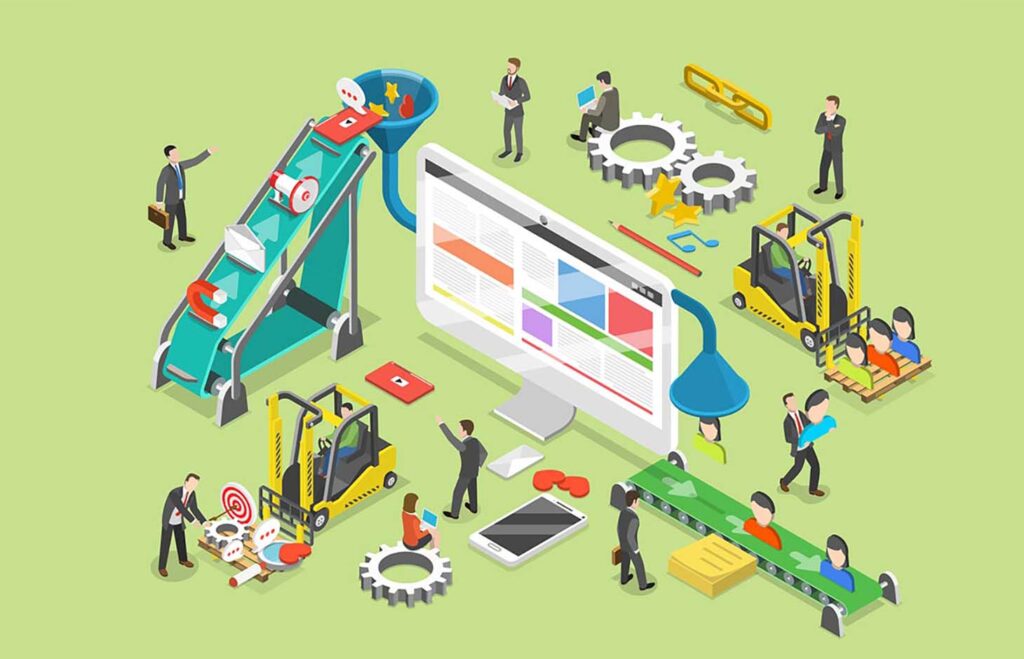Have you ever been truly disappointed by a product after its bright and shiny marketing campaign over-delivered on what the product actually offered?
A great way to avoid this is just to start using the product before you ever commit to a contract or even pay a cent. If you’re the customer in this scenario, you get to realize the benefits (or deficiencies) of the product and make sure it satisfies your needs. And if you’re the business, you’re basically giving your customers the opportunity to convince themselves to make the purchase all on their own—no sales pitch needed.
Even better is when your product has its marketing and onboarding built right in! Does successfully using your product involve having your users invite others to join or collaborate? This kind of functionality ensures your users are actively involved in broadening your user base. Growth becomes inevitable—maybe even viral.
More software as a service (SaaS) businesses are jumping on-board with this concept that turns the traditional sales method inside out. It’s all about letting the product speak for itself, as well as taking that product to the next level based on authentic user feedback and behavior.
It’s called product-led growth.
What is product-led growth?
The term product-led growth was coined by Openview Partners.
They define PLG as “an end-user-focused growth model that relies on the product itself as the primary driver of customer acquisition, conversion and expansion.”
Though Openview Partners created the term, the core tenets of the strategy have existed for almost as long as SaaS. A free trial or freemium pricing option allows end users to test a SaaS product before paying, and this raises perceived value. Usage data then improves the SaaS business’s ability to deliver on experienced value.
Recently, a new phenomenon has emerged which many are calling the “End User Era.” In a nutshell, a business’s team members—or end users—use a free version of software to solve a problem. Then, either because they outgrow free features or because they see value in paid versions of the software, they recommend broader adoption to their managers or executives who then create paid business accounts.
If you use Slack, Zoom, Wix, Zendesk, Trello, HubSpot, or one of the many other popular SaaS products available today, you’ve likely been part of the End User Era and have seen PLG at work. According to SaaStock, it’s one of the top 10 SaaS trends for 2020.
The benefits of PLG for SaaS businesses
Before we delve into how to adapt a PLG strategy for your SaaS business, let’s discuss a few of the reasons why it’s so popular.
1. It reduces customer acquisition cost (CAC).
Product-led growth leans heavily on the product for customer acquisition. Product development teams then focus on leveraging customer usage data to shape their products with built-in onboarding and customer support, leaving marketing and sales with less traditional roles.
With PLG, marketing and sales focus less on selling and more on providing multiple pathways for customer self-education. This is much more cost-effective, even with free trials. As customers onboard themselves and find the product easy to adopt, CAC goes down while the odds of broader adoption across a business go up.
2. It puts onboarding in customers’ hands.
Once customers sign up, PLG leverages built-in product onboarding. No more interdepartmental software training: think more along the lines of individual team members who start using the free version of Zoom for meetings, then eventually ask their department heads to pay for Zoom for more features and functionality.
At this point, most of the team has already onboarded itself, and any new users will do the same. This lowers cost and strain on a SaaS business’s resources and time. It also opens the door to a product going viral.
3. It reduces churn by eliminating buyer’s remorse.
Because these SaaS users typically choose to become paying customers completely on their own, the chance for buyer’s remorse is extremely low.
When a free user becomes a paying customer, they’ve decided they need the product, rather than being convinced by sales. Often, an executive team or management sees that the tool already benefits their business, and is happy to expand usage.
For this reason, PLG is a prime strategy for harnessing expansion MRR through upsells and cross-sells.
4. It’s competitive.
Businesses using PLG scale faster than the competition. They experience less drain on resources, a lower churn rate, and more revenue.
PLG focuses on creating a product that enables customers to be highly self-sufficient. Self-sufficient customers become happy customers, who in turn become advocates encouraging others in their network to try the product.
Meanwhile, non-PLG businesses scramble to build bigger sales and marketing teams and expend more energy on onboarding and customer success. Competing with free trials and self-service is difficult.
In this way, digital transformation of a business is inherent in the PLG environment.
How to make product-led growth work for your SaaS business
Product-led growth positions the product as a marketing channel. This requires intimate understanding and communication of a product’s value to customers. It also requires flawless delivery of that value.
Customers today love to self-educate; researching products and—when possible—trying them out for free. Putting the power of knowledge acquisition in their hands is a branch of today’s customer-centricity, but building a product that enables that takes a unique approach. An approach that puts customer-focused digital transformation front and center.
If you’re considering using a PLG strategy, here’s what you’ll need to do.
1. Be transparent.
Perceived value needs to match experienced value. Overselling a product eventually leads to burdening your resources with the need to create custom solutions to retain customers—which is the opposite of PLG.
Be realistic and clearly communicate what your product can and cannot do, as well as what it costs. Users will try free products that look promising and buy if they meet expectations. This process builds trust in both your product and brand, so deliver quality, and then just let it happen.
2. Don’t “sell”.
No one wants to be sold to anymore. End users want to research, learn, and explore for themselves. As a result, your approach should be to empower self-learning and self-service. Set your sights on customer success and retention rather than sales. Your product should onboard new users without outside help, and have easily accessible resources for learning how to overcome hurdles along the way.
This doesn’t mean your sales team disappears, but rather these individuals become more like product experts available to recommend best usage and suggest helpful features as needed.
3. Reduce silos.
In more traditional models, acquisition and retention are a series of hand-offs: marketing to sales, sales to customer success, etc., with each department washing their hands of the customer at each step.
Product-led growth doesn’t work that way. Instead, it depends on a shared, single customer view (SCV) to ensure the best possible customer experience.
Every department, from product development to support, needs to have access to the same data about each end user. This shared information is crucial as these departments collectively engage in the continual task of building and delivering a product that enables end users to be successfully self-sufficient.
4. Use data.
Data is central to PLG. It informs product development and engineering about how end users are interacting with the product, and what changes would make it a better fit for their needs.
As Abhinav Asthana of Postman explains,
One of the other key opportunities for product-led companies is the ability to take advantage not only of real experimentation, but also truly data-driven decision making about product features and go-to-market strategies.”
Data identifies best-fit customers for marketing, informs business decision making, and can shape a product for better PLG.
Data plants the seeds for SaaS growth
Subscriber data benefits multiple departments while driving PLG. It can indicate account health, identifying customers who are likely to churn and could use extra attention from customer success. It can also identify those who’d benefit from an upsell or cross-sell from sales. This is all in addition to the perks for product development and marketing already discussed, forming an informed and united front across all departments.
In fact, a PLG strategy’s reliance on data and the SCV becomes an asset that fuels a SaaS business’s growth.
While reducing silos and gathering end-user data is necessary, it’s also crucial to have a single source of truth (SSOT) that every department turns to for this information. It is evident that meeting these criteria for a successful PLG execution goes hand in step with a digital transformation strategy.
In order to optimize your company’s revenue operations to support PLG—including transitioning users through the product discovery phase, managing their information in that SCV way, providing them with ongoing support, and billing them if and when the time comes—you may need to rethink your resources.
Today, power is in customers’ hands. A product-led growth strategy with the right technology, processes, and people, acknowledges and leverages that reality while reducing the burden on a business’s resources.








